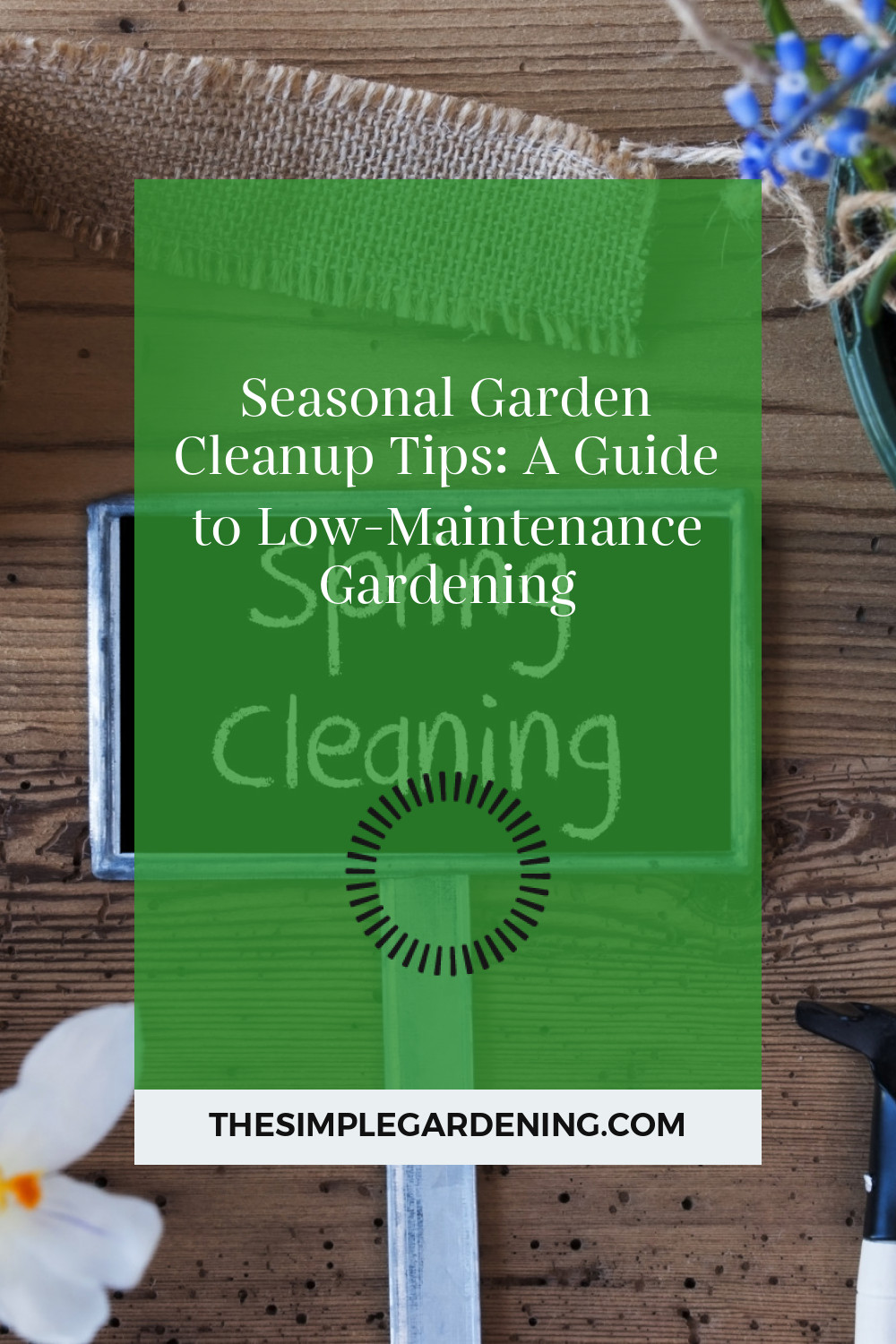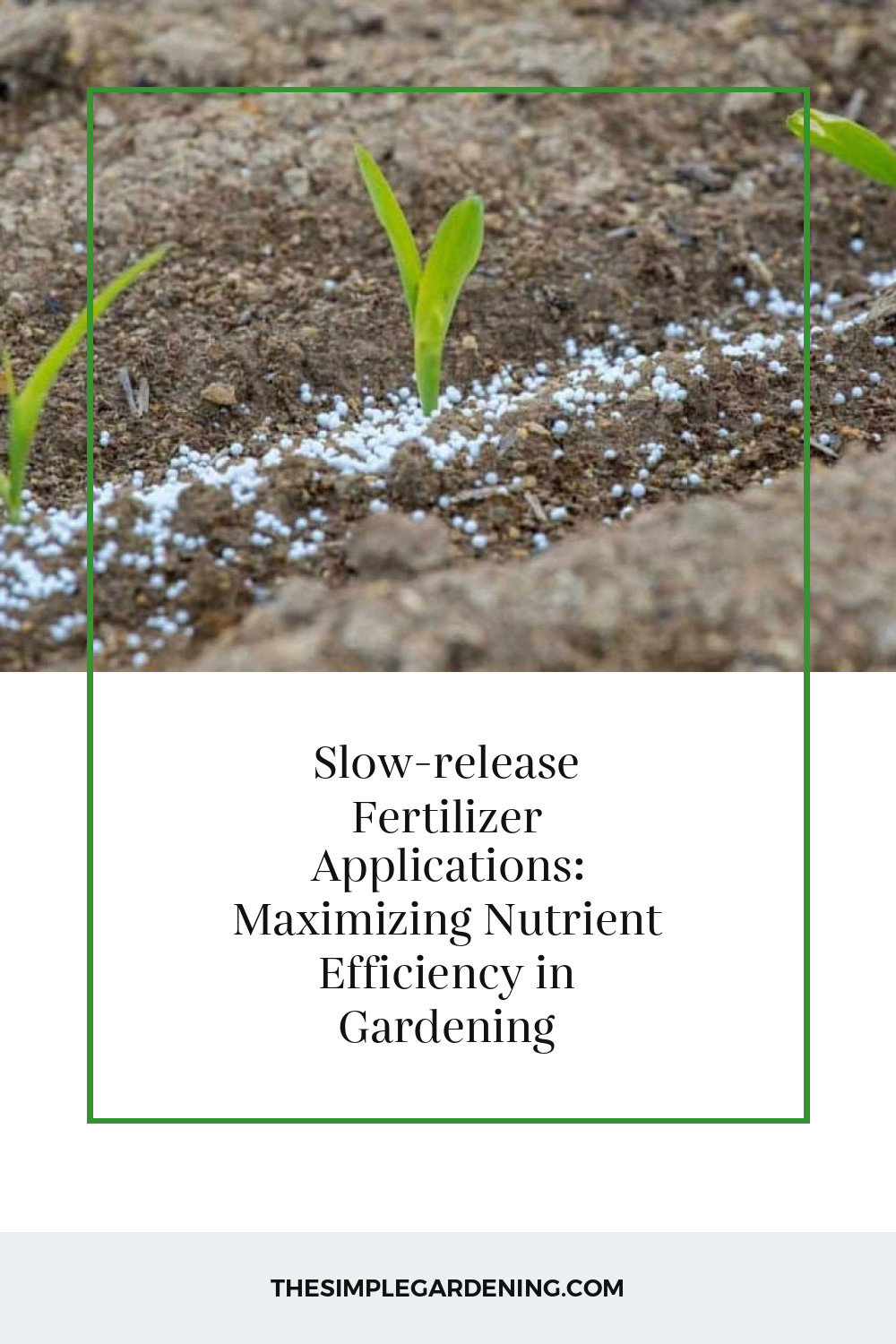Maintaining a beautiful garden doesn’t have to be a time-consuming chore. With the right approach to seasonal cleanup and maintenance, you can enjoy a thriving garden with minimal effort. In this guide, we’ll explore the ins and outs of low-maintenance gardening, including the importance of seasonal cleanup, essential tasks for each season, practical tips for busy gardeners, and more.
Understanding Low-Maintenance Gardening
What is low-maintenance gardening?
Low-maintenance gardening involves designing and maintaining a garden that requires minimal effort to keep it looking its best. This approach focuses on selecting plants that are well-suited to your climate and soil conditions, reducing the need for constant care and attention.
| Advantages of Low-Maintenance Gardening |
|---|
| 1. Saves time and effort |
| 2. Reduces water and resource usage |
| 3. Creates a more sustainable garden |
| 4. Provides a relaxing outdoor space |
Low-maintenance gardens are designed to thrive with minimal intervention, allowing you to spend more time enjoying your outdoor space and less time working in it.
Importance of seasonal cleanup in low-maintenance gardens
Seasonal cleanup plays a crucial role in maintaining a low-maintenance garden. By clearing away debris, pruning plants, and preparing the soil, you can set the stage for a successful growing season ahead.
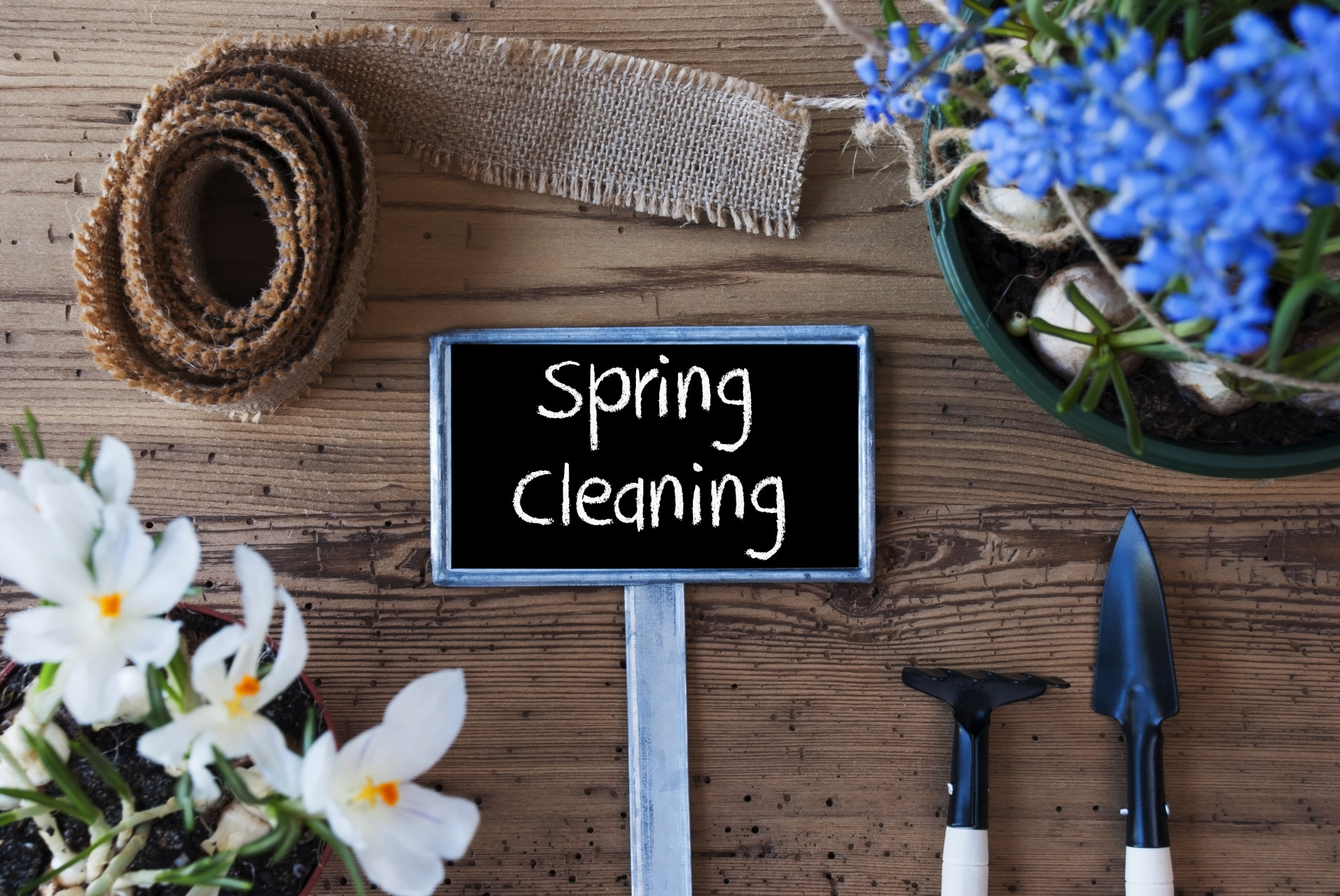
Source Image: rescuemytimecleaningservice.com
Preparation and Planning
Assessing your garden’s needs
Before diving into seasonal cleanup, take some time to assess the current state of your garden. Identify any areas that need attention, such as overgrown shrubs, weedy patches, or compacted soil.
| Garden Assessment Checklist |
|---|
| 1. Check for weeds and debris |
| 2. Inspect plants for signs of pests or disease |
| 3. Evaluate soil quality and drainage |
| 4. Assess the condition of garden structures |
By understanding your garden’s specific needs, you can tailor your cleanup efforts to address any issues that may arise.
Creating a seasonal cleanup schedule
To stay on top of garden maintenance throughout the year, it’s helpful to create a seasonal cleanup schedule. Break down tasks by season, making note of when to prune plants, amend the soil, and perform other essential maintenance activities.
| Seasonal Cleanup Schedule |
|---|
| Spring: Clear debris, prune shrubs, divide perennials |
| Summer: Weed control, deadhead flowers, monitor for pests |
| Fall: Cut back perennials, collect leaves, winterize plants |
| Winter: Protect sensitive plants, clean and sharpen tools |
By following a schedule, you can ensure that no task gets overlooked and that your garden stays in top shape year-round.

Source Image: www.almanac.com
Gathering necessary tools and supplies
Before starting any cleanup work, gather the tools and supplies you’ll need to get the job done efficiently. Essential items may include pruners, rakes, shovels, compost, mulch, and protective gear.
| Essential Garden Cleanup Tools |
|---|
| 1. Pruning shears |
| 2. Garden rake |
| 3. Shovel |
| 4. Wheelbarrow or garden cart |
| 5. Gloves |
Having the right tools on hand can make seasonal cleanup tasks much easier and more enjoyable.
Spring Cleanup Essentials
Clearing debris and dead vegetation
As the weather warms up, start your garden cleanup by removing any debris and dead vegetation that has accumulated over the winter. This includes fallen leaves, branches, and other organic matter.
| Spring Cleanup Checklist |
|---|
| 1. Remove fallen leaves and branches |
| 2. Rake up dead vegetation |
| 3. Clear out garden beds and borders |
| 4. Dispose of debris or add it to the compost pile |
Clearing away debris helps prevent pests and diseases from taking hold and allows new growth to emerge unimpeded.
Pruning shrubs and trees
Spring is also an ideal time to prune shrubs and trees to promote healthy growth and maintain their shape. Remove any dead or damaged branches, as well as any crossing or overcrowded stems.
| Pruning Tips for Spring |
|---|
| 1. Use sharp, clean pruners |
| 2. Cut just above a bud or lateral branch |
| 3. Remove suckers and water sprouts |
| 4. Step back periodically to assess your progress |
Proper pruning encourages strong, vigorous growth and enhances the overall appearance of your landscape.
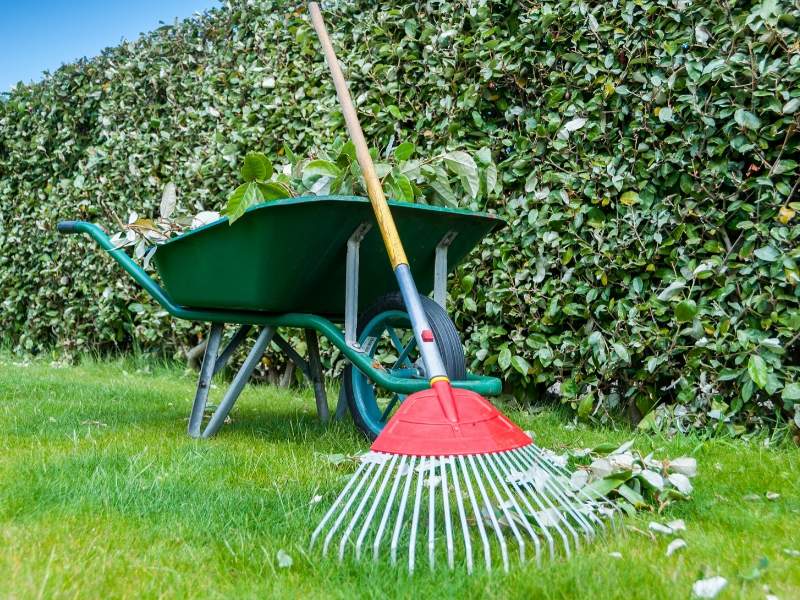
Source Image: digthisdesign.net
Dividing perennials
Many perennial plants benefit from being divided every few years to rejuvenate them and prevent overcrowding. Spring is an excellent time to divide perennials as they begin to emerge from dormancy.
| Perennial Division Guide |
|---|
| 1. Dig up the entire plant |
| 2. Separate the root ball into smaller sections |
| 3. Replant divisions in prepared soil |
| 4. Water thoroughly after planting |
Dividing perennials helps maintain their health and vigor while also providing you with new plants to expand your garden.
Soil amendment and mulching
Finally, take the opportunity to amend your soil with compost or other organic matter to improve its structure and fertility. Apply a layer of mulch to help conserve moisture, suppress weeds, and regulate soil temperature.
| Soil Amendment and Mulching Tips |
|---|
| 1. Test soil pH and nutrient levels |
| 2. Incorporate compost or aged manure |
| 3. Apply a 2-3 inch layer of mulch |
| 4. Leave a gap around plant stems to prevent rot |
Healthy soil is the foundation of a thriving garden, so it’s essential to provide the nutrients and organic matter that plants need to grow and thrive.
Summer Maintenance
Weed control strategies
Weeds can quickly take over a garden if left unchecked, so it’s essential to stay on top of weed control throughout the summer months. Mulching, hand-pulling, and using landscape fabric can all help keep weeds at bay.
| Summer Weed Control Methods |
|---|
| 1. Apply mulch to garden beds |
| 2. Hand-pull weeds as soon as they appear |
| 3. Use landscape fabric under mulch |
| 4. Consider using an organic weed killer if necessary |
Preventing weeds from establishing themselves helps reduce competition for water, nutrients, and sunlight, allowing your plants to thrive.
Watering techniques for low-maintenance gardens
In a low-maintenance garden, efficient watering is key to conserving water and promoting healthy plant growth. Use techniques such as drip irrigation, soaker hoses, or a timed sprinkler system to deliver water directly to the roots where it’s needed most.
| Watering Tips for Low-Maintenance Gardens |
|---|
| 1. Water deeply and infrequently |
| 2. Water early in the morning to reduce evaporation |
| 3. Use a rain gauge to monitor rainfall |
| 4. Group plants with similar water needs together |
By watering wisely, you can help your garden thrive while also minimizing water waste and reducing your environmental impact.
Deadheading flowers
Deadheading, or removing spent flowers, is a simple yet effective way to prolong the blooming period of many annual and perennial plants. This encourages continued flower production and helps keep your garden looking neat and tidy.
| Deadheading Techniques |
|---|
| 1. Pinch or snip off faded flowers |
| 2. Cut back to a set of healthy leaves |
| 3. Remove entire flower stalks if necessary |
| 4. Deadhead regularly throughout the growing season |
Regular deadheading not only promotes repeat blooming but also prevents plants from wasting energy on seed production.
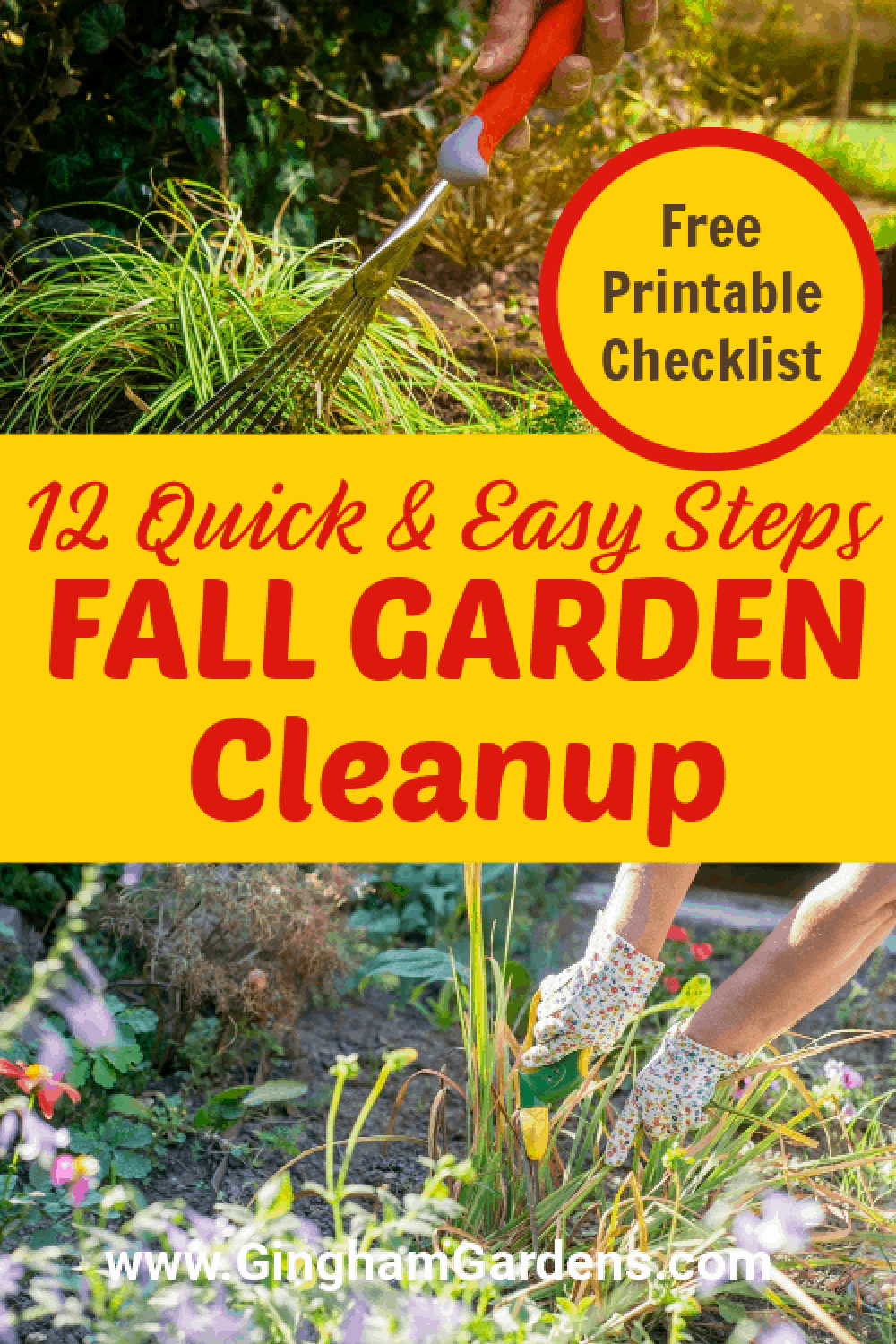
Source Image: ginghamgardens.com
Seasonal Garden Cleanup Tips
Monitoring for pests and diseases
Summer is prime time for pests and diseases to wreak havoc in the garden. Keep a close eye on your plants for any signs of trouble, such as chewed leaves, discolored foliage, or unusual growth.
| Pest and Disease Monitoring Tips |
|---|
| 1. Inspect plants regularly for signs of pests or disease |
| 2. Identify the problem correctly before taking action |
| 3. Consider using organic pest control methods |
| 4. Remove and destroy heavily infested plants if necessary |
Early detection and intervention are crucial for preventing pest and disease outbreaks from spreading throughout your garden.
Fall Preparation
Cutting back spent perennials
As summer draws to a close, it’s time to start preparing your garden for the colder months ahead. Begin by cutting back spent perennials to tidy up the garden and remove any potential hiding spots for pests and diseases.
| Fall Perennial Pruning Guidelines |
|---|
| 1. Cut back flower stalks to ground level |
| 2. Trim back foliage to 2-3 inches above the soil |
| 3. Remove any diseased or damaged plant material |
| 4. Leave some seed heads for birds and wildlife |
Pruning back perennials helps prevent disease spread and prepares the garden for winter dormancy.
Collecting and composting leaves
Fallen leaves are a valuable resource for the garden, providing nutrients and organic matter when composted. Gather leaves from your lawn and garden beds and add them to your compost pile to create nutrient-rich compost for next year’s garden.
| Leaf Collection and Composting Tips |
|---|
| 1. Use a rake or leaf blower to gather leaves |
| 2. Shred leaves before adding them to the compost pile |
| 3. Layer leaves with green material such as kitchen scraps or grass clippings |
| 4. Turn the compost pile regularly to speed up decomposition |
Composting leaves not only reduces waste but also improves soil health and fertility.
Winterizing plants and garden structures
Before the first frost hits, take steps to protect sensitive plants and garden structures from winter damage. This may include wrapping tender plants in burlap, insulating outdoor faucets, and securing garden ornaments.
| Winterizing Checklist |
|---|
| 1. Mulch around the base of plants for insulation |
| 2. Bring tender plants indoors or into a greenhouse |
| 3. Drain and store hoses and irrigation systems |
| 4. Secure garden structures to prevent damage from wind or snow |
Winterizing your garden helps ensure that plants and structures survive the cold winter months intact.
Preparing soil for next season
Fall is also an excellent time to prepare your soil for next year’s growing season. Amend the soil with compost or organic matter, and consider performing a soil test to identify any nutrient deficiencies or pH imbalances.
| Soil Preparation Steps |
|---|
| 1. Test soil pH and nutrient levels |
| 2. Add compost or aged manure to improve soil structure |
| 3. Incorporate organic amendments such as bone meal or blood meal |
| 4. Mulch garden beds to protect soil from erosion and compaction |
Healthy soil is the foundation of a successful garden, so it’s essential to provide the nutrients and organic matter that plants need to thrive.
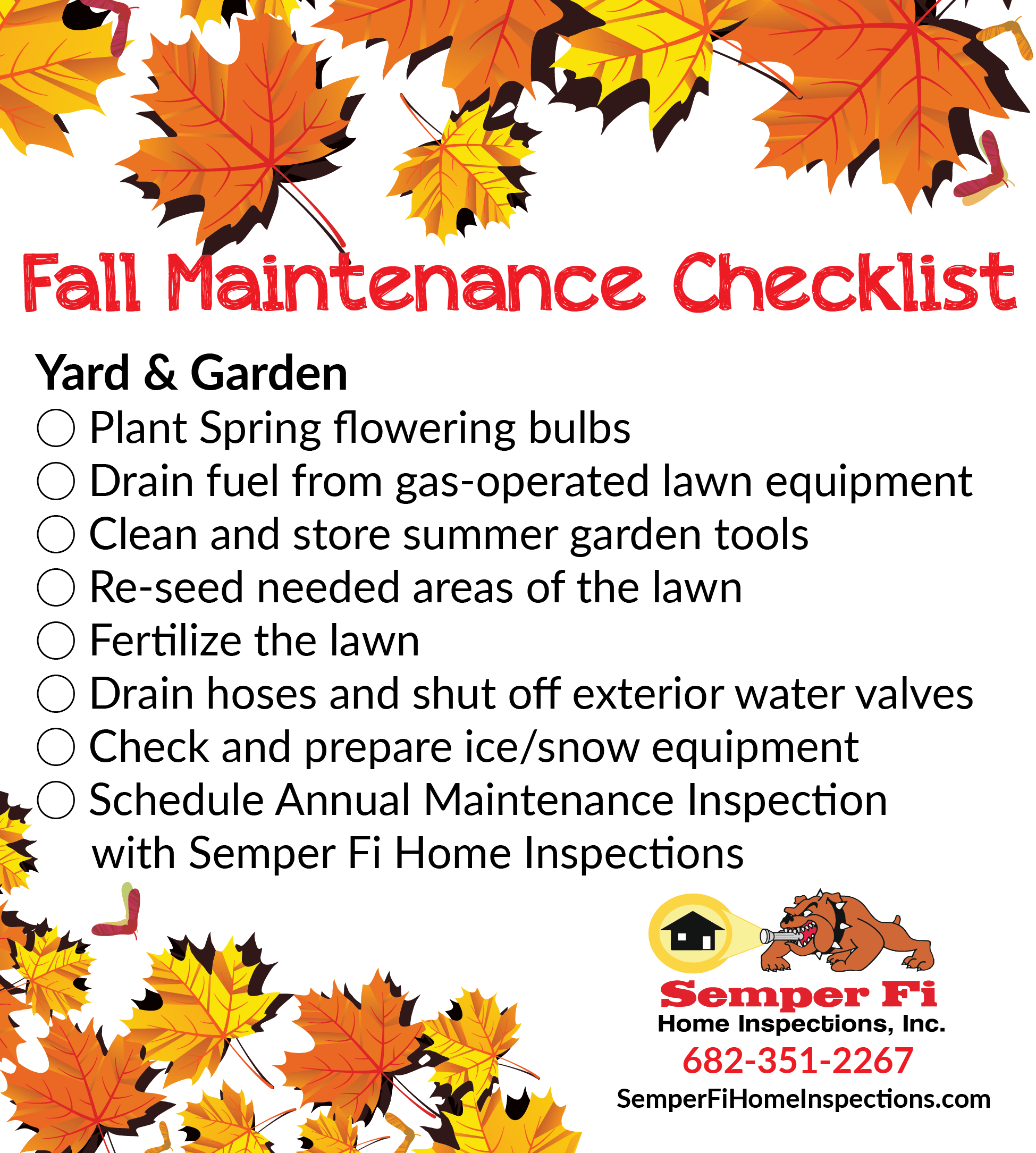
Source Image: semperfihomeinspections.com
Winter Maintenance
Protecting sensitive plants from frost
During the winter months, tender plants are at risk of frost damage. Take steps to protect these plants by covering them with frost blankets, row covers, or even old bedsheets on cold nights.
| Frost Protection Methods |
|---|
| 1. Cover plants with frost blankets or row covers |
| 2. Use cloches or cold frames for individual plants |
| 3. Bring potted plants indoors or into a sheltered area |
| 4. Water plants thoroughly before a frost to insulate roots |
By providing extra protection, you can help ensure that your plants survive the winter and emerge healthy and strong in the spring.
Cleaning and sharpening garden tools
Winter is an excellent time to clean and sharpen your garden tools to keep them in good working condition. Remove any dirt and debris from shovels, pruners, and hoes, and use a file or sharpening stone to sharpen blades.
| Garden Tool Maintenance Tips |
|---|
| 1. Clean tools with warm, soapy water |
| 2. Remove rust with steel wool or a wire brush |
| 3. Sharpen blades using a file or sharpening stone |
| 4. Apply a light coat of oil to prevent rust |
Properly maintained tools make gardening tasks easier and more efficient, so it’s worth taking the time to care for them properly.
Planning and designing for the upcoming season
Winter is also an excellent time to start planning and designing your garden for the upcoming season. Take stock of what worked well last year and what could be improved, and start sketching out ideas for new plantings or garden layouts.
| Garden Planning Tips |
|---|
| 1. Reflect on last year’s successes and challenges |
| 2. Research new plants or garden techniques to try |
| 3. Create a garden layout or planting plan |
| 4. Order seeds or plants early to ensure availability |
By planning ahead, you can make the most of the upcoming growing season and create a garden that brings you joy and satisfaction.
Indoor gardening projects
If you’re missing your time in the garden during the winter months, why not bring the garden indoors? There are plenty of indoor gardening projects you can tackle, from starting seeds to caring for houseplants.
| Indoor Gardening Ideas |
|---|
| 1. Start seeds for early spring planting |
| 2. Grow herbs or salad greens on a sunny windowsill |
| 3. Care for houseplants by repotting or pruning as needed |
| 4. Create a terrarium or miniature garden as a decorative accent |
Indoor gardening not only keeps your green thumb busy during the winter but also brings a touch of nature indoors.

Source Image: www.fromhousetohome.com
Managing Garden Beds
Weed suppression methods
Weeds are the bane of every gardener’s existence, but there are several effective methods for keeping them in check. Mulching, using landscape fabric, and hand-weeding are all popular weed suppression techniques.
| Weed Suppression Strategies |
|---|
| 1. Apply a thick layer of mulch to garden beds |
| 2. Use landscape fabric to smother weeds |
| 3. Hand-pull weeds regularly, especially when they’re small |
| 4. Consider using a natural weed killer such as vinegar or boiling water |
By staying vigilant and using a combination of techniques, you can keep weeds from taking over your garden beds.
Implementing raised beds or containers for easier maintenance
Raised beds and containers offer several advantages for gardeners, including better soil drainage, improved weed control, and easier access for planting and harvesting. Consider incorporating raised beds or containers into your garden design to make maintenance tasks more manageable.
| Benefits of Raised Beds and Containers |
|---|
| 1. Improved soil drainage and aeration |
| 2. Better weed control and pest management |
| 3. Easier access for planting, weeding, and harvesting |
| 4. Ideal for small or urban spaces where garden space is limited |
Raised beds and containers allow you to maximize your gardening space while minimizing the effort required to maintain it.

Source Image: www.artofit.org
Seasonal Garden Cleanup Tips
Using ground covers to reduce weed growth
Ground covers are low-growing plants that spread quickly to form a dense mat, suppressing weed growth and reducing the need for mulching and weeding. Choose ground covers that are well-suited to your climate and soil conditions for the best results.
| Ground Cover Options |
|---|
| 1. Creeping thyme |
| 2. Sedum |
| 3. Creeping Jenny |
| 4. Ajuga |
Ground covers not only help keep weeds at bay but also add visual interest to your garden with their foliage and flowers.
Practical Tips for Busy Gardeners
Incorporating low-maintenance plants
When selecting plants for your garden, prioritize varieties that are known for their low-maintenance qualities. Look for plants that are drought-tolerant, disease-resistant, and well-suited to your local growing conditions.
| Low-Maintenance Plant Options |
|---|
| 1. Lavender |
| 2. Succulents |
| 3. Ornamental grasses |
| 4. Daylilies |
Choosing low-maintenance plants reduces the amount of time and effort required to care for your garden, allowing you to spend more time enjoying it.
Utilizing automation and smart gardening tools
Take advantage of modern technology to streamline your garden maintenance routine. Automated irrigation systems, smart timers, and weather sensors can help ensure that your plants receive the right amount of water at the right time, even when you’re busy or away from home.
| Smart Gardening Tools |
|---|
| 1. Drip irrigation systems |
| 2. Soil moisture sensors |
| 3. Smart sprinkler controllers |
| 4. Weather-responsive timers |
Smart gardening tools make it easier than ever to maintain a healthy garden with minimal effort.
Grouping plants with similar needs
When planning your garden layout, group plants with similar water, light, and soil requirements together. This makes it easier to provide them with the care they need and reduces the risk of over- or under-watering or fertilizing.
| Plant Grouping Guidelines |
|---|
| 1. Group sun-loving plants together in sunny areas |
| 2. Plant moisture-loving plants in low-lying or shaded areas |
| 3. Consider the mature size of plants when spacing them |
By grouping plants strategically, you can create microclimates within your garden that support healthy growth and minimize maintenance.

Source Image: 1stchoicelawncare.com
Encouraging Natural Ecosystems
Attracting beneficial insects and wildlife
Invite beneficial insects and wildlife into your garden by providing food, water, and shelter. Planting native flowers, installing bird feeders and baths, and leaving some areas of your garden wild and untamed can all help create a thriving ecosystem.
| Beneficial Insect Attractants |
|---|
| 1. Native flowering plants |
| 2. Butterfly bushes |
| 3. Herb gardens |
| 4. Pollinator-friendly plants |
Beneficial insects and wildlife play a crucial role in controlling pests and pollinating plants, making them valuable allies in the garden.
Implementing sustainable gardening practices
Reduce your environmental impact and create a more sustainable garden by adopting eco-friendly gardening practices. This may include composting kitchen scraps, using organic fertilizers and pest control methods, and conserving water.
| Sustainable Gardening Practices |
|---|
| 1. Composting garden waste |
| 2. Using organic fertilizers |
| 3. Conserving water |
| 4. Planting native species |
By gardening sustainably, you can protect the environment while enjoying the beauty and abundance of your garden.
Creating habitat areas within the garden
Diversify your garden by creating habitat areas for birds, butterflies, and other wildlife. Include features such as birdhouses, bee hotels, and butterfly gardens to attract and support a wide range of species.
| Wildlife Habitat Features |
|---|
| 1. Bird feeders and baths |
| 2. Native plantings |
| 3. Water features |
| 4. Insect hotels |
Creating habitat areas within your garden not only enhances its biodiversity but also provides you with endless opportunities for observation and enjoyment.
Mulching and Composting
Choosing the right mulch for your garden
Mulch serves multiple purposes in the garden, including conserving moisture, suppressing weeds, and insulating plant roots. Choose a mulch that is well-suited to your garden’s needs and aesthetic preferences.
| Common Mulch Types |
|---|
| 1. Bark mulch |
| 2. Wood chips |
| 3. Straw |
| 4. Cocoa bean hulls |
The right mulch can enhance the health and beauty of your garden while reducing the need for maintenance.
Benefits of composting in low-maintenance gardening
Composting is a natural process that transforms organic waste into nutrient-rich compost, which can be used to improve soil fertility and structure. By composting kitchen scraps, yard waste, and other organic matter, you can create a free and sustainable source of fertilizer for your garden.
| Benefits of Composting |
|---|
| 1. Enriches soil with nutrients |
| 2. Improves soil structure and drainage |
| 3. Reduces the need for chemical fertilizers |
| 4. Encourages beneficial soil organisms |
Composting is an essential practice for low-maintenance gardeners, providing numerous benefits for both plants and the environment.
Simple composting techniques for home gardeners
Composting doesn’t have to be complicated. With a few basic materials and a little know-how, you can start composting at home and reap the rewards in your garden.
| Basic Composting Steps |
|---|
| 1. Choose a compost bin or pile location |
| 2. Layer green and brown materials |
| 3. Keep the compost pile moist and aerated |
| 4. Turn the compost regularly to speed up decomposition |
By following these simple steps, you can create nutrient-rich compost to feed your garden and reduce waste.
Water Conservation Methods
Installing drip irrigation systems
Drip irrigation delivers water directly to the roots of plants, minimizing evaporation and runoff and conserving water. Install a drip irrigation system in your garden to ensure that your plants receive the moisture they need while reducing water waste.
| Benefits of Drip Irrigation |
|---|
| 1. Conserves water by delivering it directly to plant roots |
| 2. Reduces weed growth by targeting water only where it’s needed |
| 3. Prevents soil erosion and runoff |
| 4. Saves time and effort compared to hand-watering |
Drip irrigation is an efficient and effective way to water your garden, especially in regions with limited water resources.
Collecting rainwater for garden use
Rainwater harvesting is a simple and sustainable way to supplement your garden’s water supply. Install a rain barrel or cistern to capture rainwater from your roof, and use it to water your plants during dry spells.
| Rainwater Harvesting Benefits |
|---|
| 1. Reduces reliance on municipal water sources |
| 2. Provides a free and sustainable water supply |
Choosing drought-tolerant plants
In regions prone to drought or water restrictions, selecting plants that can thrive with minimal water is essential for maintaining a beautiful garden while conserving water resources. Look for drought-tolerant species that are well-adapted to your climate and soil conditions.
| Drought-Tolerant Plant Options |
|---|
| 1. Succulents |
| 2. Lavender |
| 3. Yarrow |
| 4. Russian sage |
By choosing drought-tolerant plants, you can create a resilient garden that can withstand periods of dry weather without requiring frequent watering.
Minimizing Lawn Maintenance
Alternatives to traditional lawns
Traditional lawns require regular mowing, watering, and fertilizing to keep them looking their best, but there are plenty of low-maintenance alternatives that can provide a lush green carpet with less effort. Consider replacing all or part of your lawn with ground covers, ornamental grasses, or native wildflowers.
| Lawn Alternatives |
|---|
| 1. Clover |
| 2. Ornamental grasses |
| 3. Wildflower meadows |
| 4. Moss gardens |
By choosing lawn alternatives, you can reduce water usage, minimize chemical inputs, and create a more diverse and ecologically friendly landscape.
Proper lawn care practices for low-maintenance yards
If you prefer to maintain a traditional lawn, there are still steps you can take to minimize maintenance and keep your lawn healthy and attractive with less effort. Mow high, water deeply but infrequently, and avoid over-fertilizing to promote strong, drought-tolerant grass.
| Low-Maintenance Lawn Care Tips |
|---|
| 1. Mow grass to a height of 3-4 inches |
| 2. Water deeply once a week, rather than frequent shallow watering |
| 3. Leave grass clippings on the lawn to return nutrients to the soil |
| 4. Aerate compacted soil to improve drainage and root health |
By adopting these low-maintenance lawn care practices, you can enjoy a beautiful lawn with less time and effort.
Edging and mowing techniques for a polished look
Even low-maintenance lawns benefit from occasional edging and mowing to keep them looking neat and tidy. Use a string trimmer or lawn edger to define the edges of your lawn, and mow regularly to maintain a uniform height and appearance.
| Lawn Edging and Mowing Tips |
|---|
| 1. Edge along sidewalks, driveways, and garden beds for a clean, polished look |
| 2. Mow in different directions each time to prevent grass from developing a grain |
| 3. Avoid mowing when grass is wet, as it can lead to clumping and uneven cutting |
| 4. Keep mower blades sharp for a clean, even cut |
Taking the time to edge and mow your lawn properly helps create a well-groomed appearance without the need for excessive maintenance.
Container Gardening Tips
Selecting the right containers and soil
When gardening in containers, choosing the right pots and soil is essential for success. Opt for containers with drainage holes to prevent waterlogged soil, and use a high-quality potting mix specifically formulated for container gardening.
| Container Gardening Essentials |
|---|
| 1. Choose containers with adequate drainage holes |
| 2. Use lightweight containers for easy moving |
| 3. Select a well-draining potting mix |
| 4. Consider the size and growth habit of plants when choosing containers |
By providing the right growing environment, you can ensure that your container plants thrive and flourish.
Managing watering and drainage in containers
Container plants have unique watering needs, as they can dry out more quickly than plants in the ground. Monitor soil moisture regularly and water as needed, ensuring that excess water can drain freely from the bottom of the container.
| Container Watering Tips |
|---|
| 1. Check soil moisture regularly by inserting a finger into the soil |
| 2. Water thoroughly until water runs out the bottom of the pot |
| 3. Empty saucers after watering to prevent waterlogging |
| 4. Adjust watering frequency based on weather conditions and plant needs |
Proper watering is key to success with container gardening, so it’s essential to water consistently and monitor soil moisture levels.
Overwintering container plants
In colder climates, overwintering container plants can be challenging, but with the right care, many plants can survive the winter months outdoors or indoors. Insulate containers with mulch or bubble wrap, and consider bringing sensitive plants indoors or into a protected area.
| Overwintering Tips for Container Plants |
|---|
| 1. Choose cold-hardy plants for winter containers |
| 2. Insulate containers with mulch or bubble wrap |
| 3. Group containers together for added protection |
| 4. Consider bringing tender plants indoors or into a greenhouse |
With proper protection and care, container plants can survive the winter and thrive again in the spring.
Dealing with Garden Waste
Proper disposal of garden waste
Dispose of garden waste responsibly by composting it, recycling it, or disposing of it in accordance with local regulations. Avoid dumping garden waste in natural areas or waterways, as it can disrupt ecosystems and spread pests and diseases.
| Garden Waste Disposal Methods |
|---|
| 1. Compost garden waste to create nutrient-rich compost |
| 2. Recycle plant material such as cardboard and paper |
| 3. Dispose of invasive weeds and diseased plants in the trash |
| 4. Consult local regulations for disposal of large or hazardous items |
By disposing of garden waste properly, you can minimize environmental impact and contribute to a healthier ecosystem.
Using green waste for composting
Green waste, such as grass clippings, leaves, and plant trimmings, is a valuable resource for composting. Chop or shred green waste before adding it to the compost pile to speed up decomposition and create a more uniform compost mixture.
| Green Waste Composting Tips |
|---|
| 1. Chop or shred large pieces of green waste to speed up decomposition |
| 2. Layer green waste with brown material such as leaves or cardboard |
| 3. Turn the compost regularly to aerate the pile and promote decomposition |
| 4. Monitor moisture levels and adjust as needed to keep the pile damp but not waterlogged |
Composting green waste not only reduces landfill waste but also produces nutrient-rich compost for your garden.
Recycling and repurposing garden materials
Many garden materials can be recycled or repurposed for other uses in the garden or around the home. Old pots and containers can be cleaned and reused, while broken or worn-out garden tools can often be repaired or repurposed for other tasks.
| Garden Material Recycling Ideas |
|---|
| 1. Repurpose old pots and containers as planters or storage bins |
| 2. Use broken terracotta pots as drainage material in the bottom of pots |
| 3. Turn old garden tools into decorative accents or trellises |
| 4. Donate unwanted garden materials to community gardens or schools |
By recycling and repurposing garden materials, you can reduce waste and save money while adding unique touches to your garden.
Long-Term Planning and Maintenance
Assessing and adjusting garden layouts over time
Gardens are constantly evolving, and it’s essential to periodically assess and adjust your garden layout to meet changing needs and conditions. Consider factors such
as plant growth and maturity, changing light patterns, and evolving aesthetic preferences when redesigning or adjusting your garden layout.
| Garden Layout Adjustment Tips |
|---|
| 1. Evaluate plant spacing and growth habits annually |
| 2. Consider the balance of color, texture, and height in your garden beds |
| 3. Incorporate focal points or visual elements to create interest |
| 4. Be open to experimentation and willing to make changes as needed |
By regularly reassessing and adjusting your garden layout, you can ensure that your garden remains vibrant and visually appealing over time.
Incorporating permanent structures for easier maintenance
Permanent structures such as raised beds, trellises, and pathways can enhance the functionality and aesthetics of your garden while reducing maintenance requirements. Invest in well-built, durable structures that will withstand the test of time and require minimal upkeep.
| Low-Maintenance Garden Structures |
|---|
| 1. Raised beds with built-in irrigation systems |
| 2. Arbors or pergolas for vertical gardening |
| 3. Stone or gravel pathways for easy access |
| 4. Retaining walls for terraced gardens |
By incorporating permanent structures into your garden design, you can create a cohesive and functional outdoor space that requires less ongoing maintenance.
Tracking garden performance and adjusting strategies accordingly
Keep track of your garden’s performance over time by maintaining a garden journal or digital record. Note which plants thrive and which struggle, as well as any pests or diseases encountered. Use this information to refine your gardening strategies and make informed decisions about future plantings and maintenance.
| Garden Performance Tracking Tips |
|---|
| 1. Keep detailed records of planting dates, varieties, and locations |
| 2. Note observations about plant health, growth, and productivity |
| 3. Record weather conditions and their impact on garden performance |
| 4. Take photos or sketches to document changes and successes |
By tracking your garden’s performance and adjusting your strategies accordingly, you can optimize plant health and productivity while minimizing maintenance challenges.

